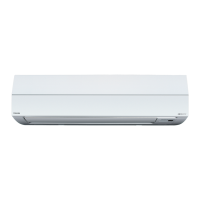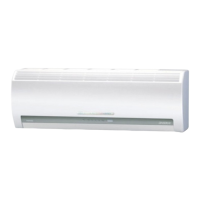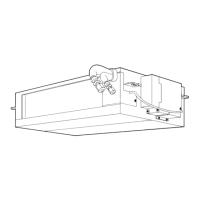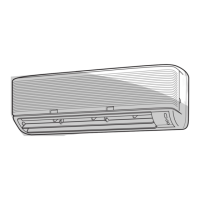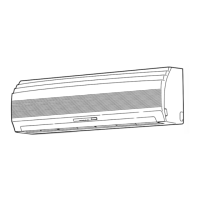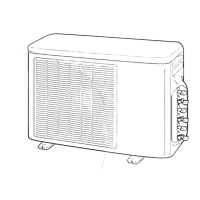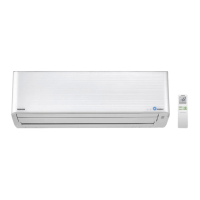ENGLISHFRANÇAISDEUTSCHITALIANOESPAÑOLΕΛΛΗΝΙΚΑPORTUGUÊSРУССКИЙ ЯЗЫК SVENSKA
AIR CONDITIONER (SPLIT TYPE)
OWNER’S MANUAL
MODE D’EMPLOI
BEDIENUNGSANLEITUNG
MANUALE DI ISTRUZIONI
MANUAL DEL PROPIETARIO
Ο∆ΗΓΙΕΣ ΧΡΗΣΗΣ
MANUAL DO UTILIZADOR
BRUKSANVISNING
ИНСТРУКЦИЯ ДЛЯ ПОЛЬЗОВАТЕЛЯ
For general public use
CLIMATISEUR (TYPE SEPARE)
Pour utilisation grand public
KLIMAGERÄT (GETEILTE AUSFÜHRUNG)
Für allgemeine Verwendung
CONDIZIONATORE D’ARIA (TIPO SPLIT)
Per l’uso in generale
ACONDICIONADOR DE AIRE (TIPO SEPARADO)
Para el uso público general
ΚΛΙΜΑΤΙΣΤΙΚΗ ΜΟΝΑ∆Α (∆ΙΑΙΡΟΥΜΕΝΟΥ ΤΥΠΟΥ)
Για γενική δηµόσια χρήση
AR CONDICIONADO (TIPO SPLIT)
Para utilização geral
LUFTKONDITIONERING (SPLITTYP)
För allmän användning
КОНДИЦИОНЕР (РАЗДЕЛИТЕЛЬНЫЙ ТИП)
Для общего бытового использования
Indoor Unit Outdoor Unit
Unité intérieure Unité extérieure
Innenraumgerät Außengerät
Unità interna Unità esterna
Unidad interior Unidad exterior
Εσωτερική µονάδα Εξωτερική µονάδα
Unidade interior Unidade exterior
Innedel Utedel
Внутренний блок Наружный блок
RAS-B10EKVP-E
RAS-B13EKVP-E
RAS-B16EKVP-E
RAS-M10EKCVP-E
RAS-M13EKCVP-E
RAS-M16EKCVP-E
RAS-10EAVP-E
RAS-13EAVP-E
RAS-16EAVP-E
RAS-M14EAV-E
RAS-M18EAV-E
RAS-M14EACV-E
RAS-M18EACV-E
Thank you for purchasing this TOSHIBA Air Conditioner. Please read this owner’s manual carefully before using
your Air Conditioner.
Avant tout, merci d’avoir porté votre choix sur un climatiseur TOSHIBA. Veuillez lire attentivement ce mode d’emploi
avant de mettre en service le climatiseur.
Wir danken Ihnen für den Kauf dieses TOSHIBA-Klimageräts. Lesen Sie die Bedienungsanleitung sorgfältig durch,
bevor Sie das Gerät in Betrieb nehmen.
Grazie per aver acquistato questo Condizionatore d’Aria TOSHIBA. Prima di usare il Condizionatore d’Aria, si
consiglia di leggere con attenzione il presente manuale.
Gracias por adquirir este acondicionador de aire TOSHIBA. Lea este manual del propietario detenidamente antes de
utilizar su acondicionador de aire.
Ευχαριστούµε για την αγορά αυτού του κλιµατιστικού της ΤΟSΗΙΒΑ. Παρακαλείστε να διαβάσετε προσεκτικά τις
οδηγίες χρήσης πριν χρησιµοποιήσετε την κλιµατιστική µονάδα σας.
Obrigado por ter adquirido este ar condicionado da TOSHIBA. Leia atentamente este manual do utilizador antes de
utilizar o ar condicionado.
Tack för ditt inköp av denna TOSHIBA luftkonditionering. Läs den här bruksanvisningen noga innan du använder
din luftkonditionering.
Благодарим Вас за покупку этого кондиционера фирмы TOSHIBA. Перед использованием Вашего
кондиционера прочитайте, пожалуйста, внимательно эту инструкцию для пользователя.


